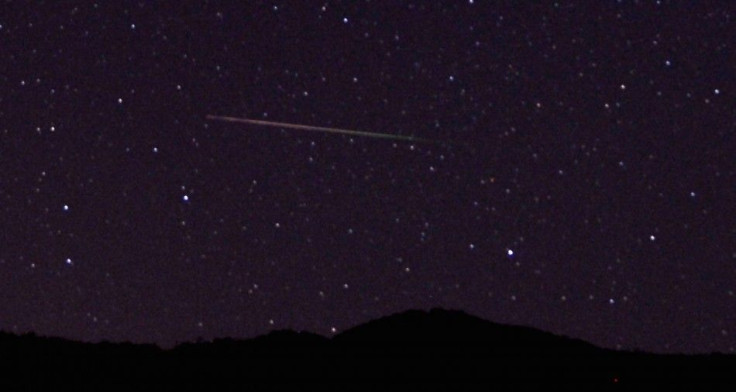2015 Meteor shower: Perseid meteor shower set to peak on Wednesday and Thursday

The 2015 Perseid meteor shower is set to peak on Wednesday and Thursday night with up to 100 meteors predicted to appear per hour. A new moon will appear as well during the meteor shower peak so the observers can experience a stunning display under the clear dark skies.
The Royal Astronomical Society astronomers estimate that at least one meteor will be visible every few minutes during the peak hours, according to a report from Space.com. French astromer Jeremie Vaubaillon further predicted in the Space.com report that a brief outburst could take place at around 2:40 p.m. EDT (6:40 p.m. UTC).
Where to best view the Perseid meteor shower display:
The 2015 Perseid meteor shower will be visible throughout the Northern Hemisphere. The interested sky gazers are recommended to search for a dark area far from the bright city lights then face northeast in order to have the best possibility of spotting a meteor.
How to best view the Perseid meteor shower display:
An advisory from the National Aeronautics and Space Administration (NASA) predicted up to 100 meteors visible per hour. According to the space agency, there is no need to use a telescope or pair of binoculars in observing the Perseid meteor shower peak.
“Using either reduces the amount of sky you can see at one time, lowering the odds that you'll see anything but darkness. Instead, let your eyes hang loose and don't look in any one specific spot,” NASA's statement reads. The space agency further explained that relaxed eyes will quickly adjust to the darkness and observe more meteors.
To best view the Perseid meteor shower display, the sky watchers should avoid looking at cell phones or any light in their viewing area because it will destroy their night vision. NASA suggests using a red light if the sky watchers want to look at something else.
“Some flashlights have handy interchangeable filters. If you don't have one of those, you can always paint the clear filter with red fingernail polish,” NASA shared. The observers will continue to experience the Perseid meteor shower display until Monday, Aug. 24, and the next well-known celestial event, which is the Leonid meteor shower, will take place in November 2015.
Contact the writer at feedback@ibtimes.com.au, or let us know what you think below.




















